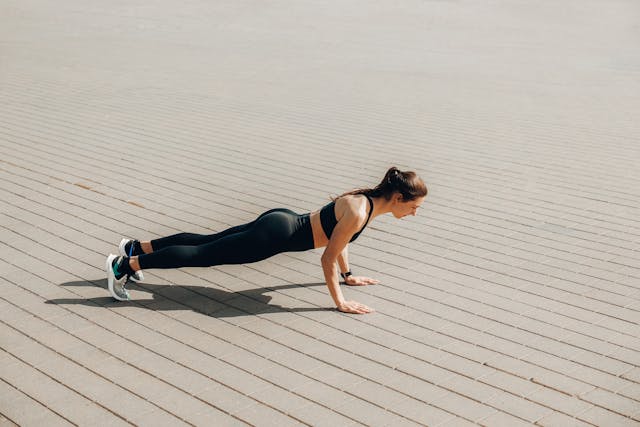By Danielle Boyd
When you think of exercising, most people’s minds go straight to the gym—barbells, heavy machines, and real hardcore workouts. But here’s the thing: heavy lifting is not the only way to get stronger or healthier. Whether you’re at home, in the office, or in a gym, resistance training is one of the simplest and most effective ways to boost your physical health. It doesn’t have to be complicated or intimidating. In fact, it’s a small investment for a big return, and the benefits go far beyond just building muscle.
As we get older, staying active becomes even more important. It helps fight off illness, keeps our minds clear, and supports the kind of strength we need just to move through daily life with ease. That is where resistance training really shines. Also known as strength training, it is all about using forces like your bodyweight, gravity, resistance bands, or even light weights to challenge your muscles. According to the CDC, this kind of movement can boost your metabolism, which helps with weight control, strengthen your bones to ward off osteoporosis, and improve your heart health by lowering blood pressure and cholesterol. Not bad, right?
What makes resistance training doable is how accessible it is. You don’t need a ton of equipment or even a gym membership to get started. You can add bodyweight exercises like squats, lunges, or planks to your routine anytime and anywhere. If you want to take things up a notch, grab some resistance bands or ankle weights. You can find them on Amazon or at most stores, and they are inexpensive, lightweight, and surprisingly powerful. You would be amazed at how much more intense a set of leg lifts or glute bridges feels when you throw on a pair of ankle weights. These tools are especially helpful for building strength in your glutes, legs, and core without putting a lot of stress on your body.
Also, you do not have to train every day to see results. In fact, you shouldn’t. Your muscles need time to recover, so giving each group at least a day of rest is key. That means hitting those muscle groups two to three times a week is plenty to build strength and feel a difference.
Whether you are at home or in the gym, adding resistance is way easier than most people think. If you are already doing bodyweight squats, try looping a mini band around your thighs to fire up your glutes. Even something simple like a plank becomes way more intense if you add a slow leg lift or place a light object on your back. These small tweaks make a big impact, increasing the load on your muscles, which is exactly what helps you get stronger over time.

At the end of the day, it is not about how much weight you are lifting. It is about challenging your muscles in a way that supports your life and your health. Whether you are using a resistance band, your own bodyweight, or a bag full of books, what really matters is showing up consistently and moving with intention. Because when you train with resistance, you are building more than muscle. You are building resilience, confidence, and long-term wellness.
So the next time you think strength training means hitting the gym and lifting heavy, just remember: you are your own gym. And you’ve already got everything you need to start today.
Sources
- Centers for Disease Control and Prevention. “Strength Training for Older Adults.” www.cdc.gov
- American College of Sports Medicine. “ACSM Guidelines for Exercise Testing and Prescription,” 11th Edition.
- Mayo Clinic Staff. “Strength Training: Get Stronger, Leaner, Healthier.” www.mayoclinic.org
- Momma, H., et al. (2022). British Journal of Sports Medicine. “Muscle-strengthening activities and risk of mortality: A systematic review and meta-analysis.”

